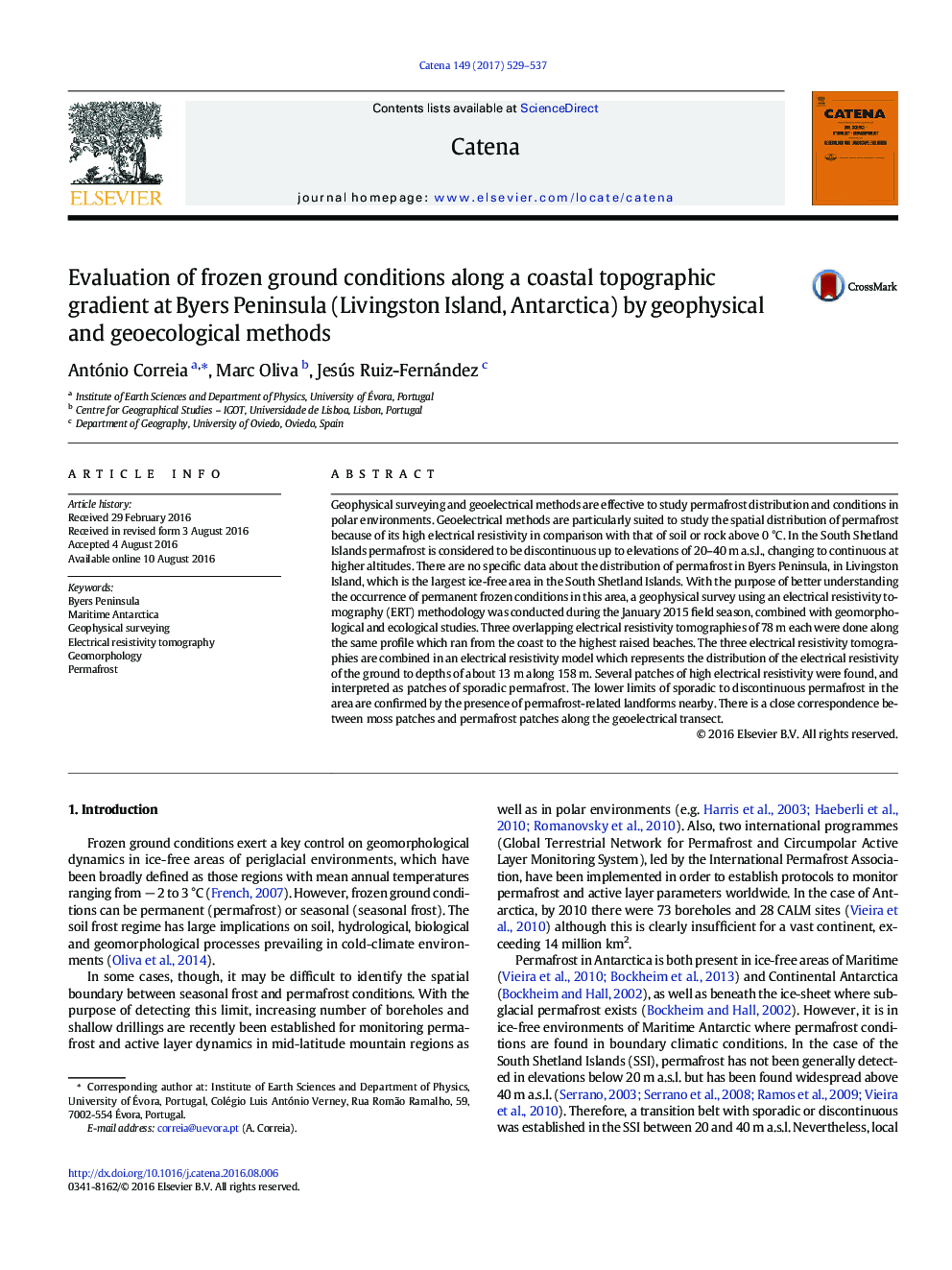| Article ID | Journal | Published Year | Pages | File Type |
|---|---|---|---|---|
| 5770085 | CATENA | 2017 | 9 Pages |
â¢We examined frozen ground conditions in Byers Peninsula, South Shetland, Antarctica.â¢Geomorphological and geophysical methods were used in this ice-free environment.â¢High resistivity values suggest patchy permafrost conditions in the marine terraces.â¢Permafrost is confirmed by geomorphic features (i.e. active blockstreams) at 18 m.â¢Clear correlation between moss beds and frozen ground conditions
Geophysical surveying and geoelectrical methods are effective to study permafrost distribution and conditions in polar environments. Geoelectrical methods are particularly suited to study the spatial distribution of permafrost because of its high electrical resistivity in comparison with that of soil or rock above 0 °C. In the South Shetland Islands permafrost is considered to be discontinuous up to elevations of 20-40 m a.s.l., changing to continuous at higher altitudes. There are no specific data about the distribution of permafrost in Byers Peninsula, in Livingston Island, which is the largest ice-free area in the South Shetland Islands. With the purpose of better understanding the occurrence of permanent frozen conditions in this area, a geophysical survey using an electrical resistivity tomography (ERT) methodology was conducted during the January 2015 field season, combined with geomorphological and ecological studies. Three overlapping electrical resistivity tomographies of 78 m each were done along the same profile which ran from the coast to the highest raised beaches. The three electrical resistivity tomographies are combined in an electrical resistivity model which represents the distribution of the electrical resistivity of the ground to depths of about 13 m along 158 m. Several patches of high electrical resistivity were found, and interpreted as patches of sporadic permafrost. The lower limits of sporadic to discontinuous permafrost in the area are confirmed by the presence of permafrost-related landforms nearby. There is a close correspondence between moss patches and permafrost patches along the geoelectrical transect.
